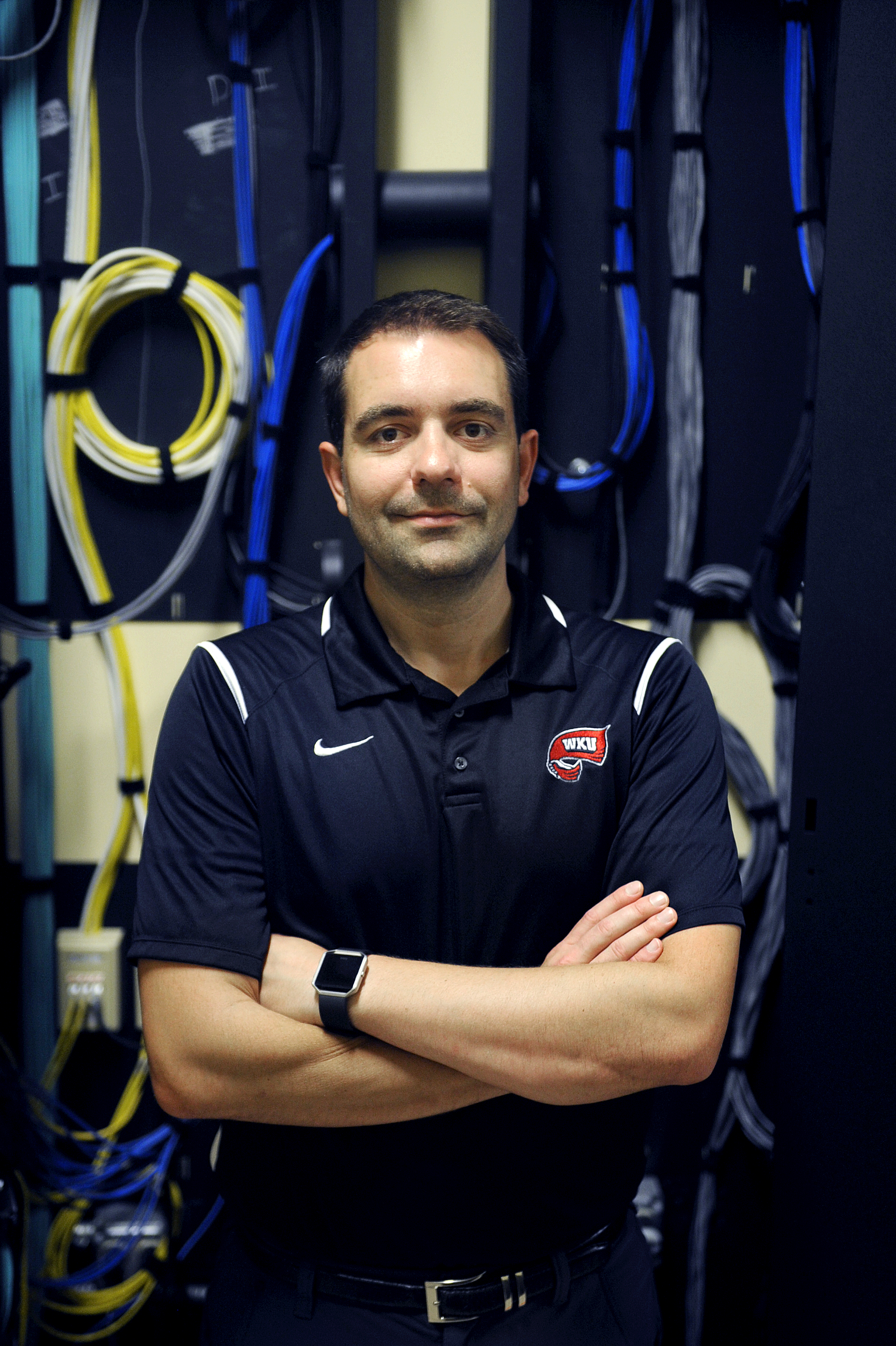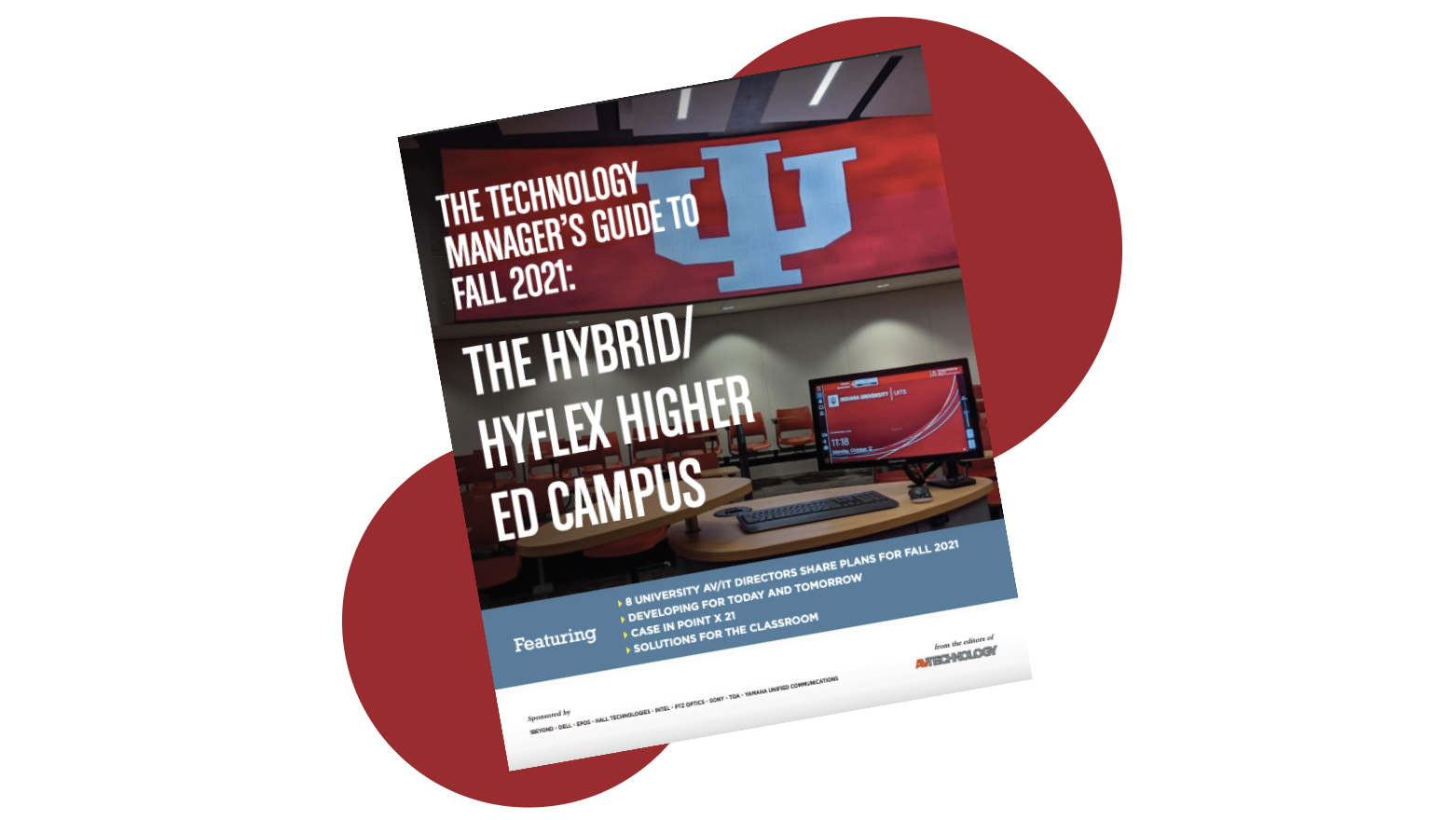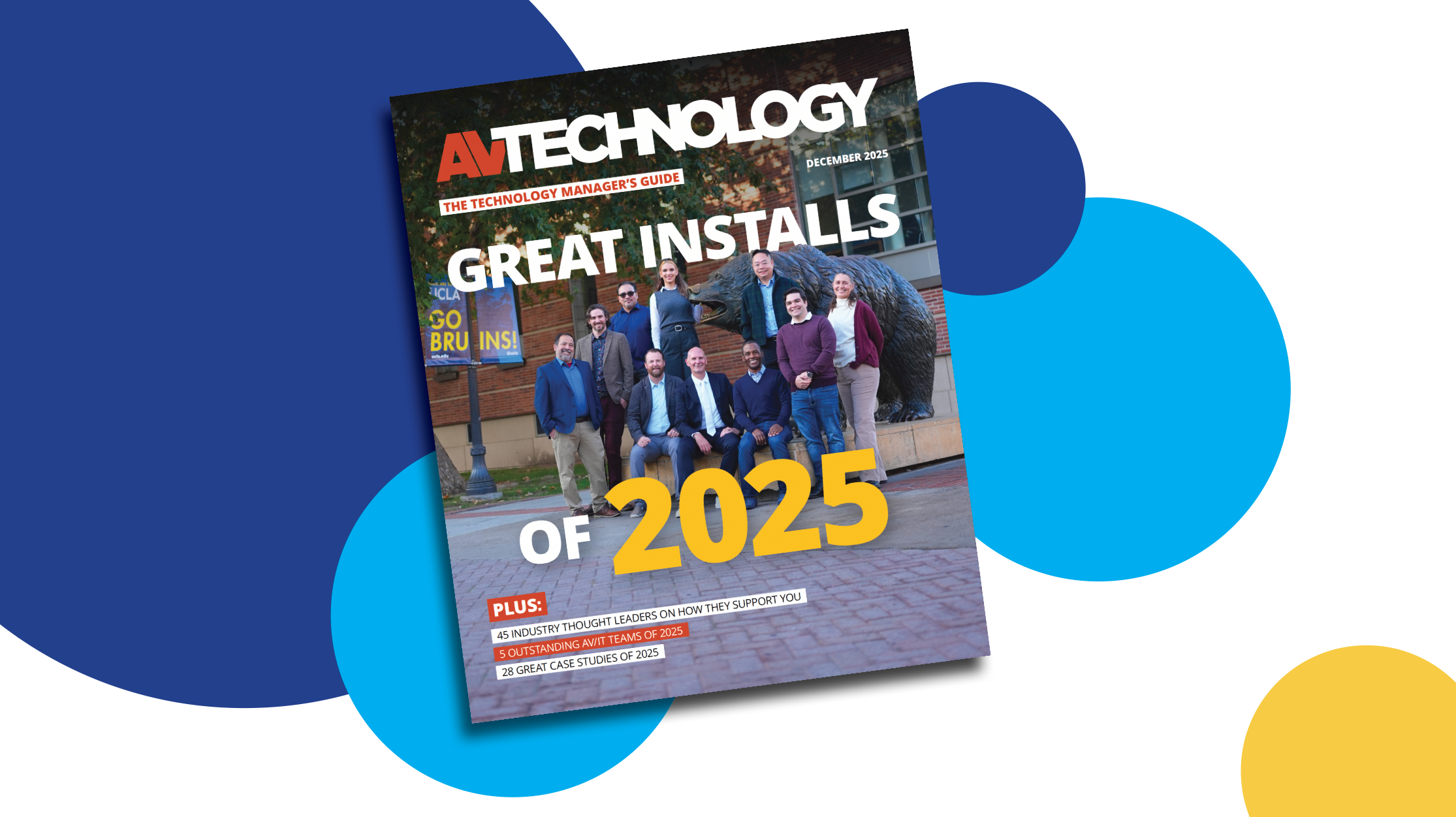Spotlight on Western Kentucky University — 8 AV/IT Tech Directors Share: Fall 2021 – The Hybrid/HyFlex Higher Ed Campus
At Western Kentucky University, there was a plan formulated to purchase USB document cameras with built in microphones as a stopgap to the fast-paced hybrid/HyFlex model during the pandemic.

AV Technology content director Cindy Davis sat down with the AV/IT directors from eight universities to learn how they are approaching the 2021–22 school year. Some are returning to pre-pandemic status with few reconfigured classrooms for hybrid learning, others are all-in with hybrid, or HyFlex modalities, while others are in transition and planning for the future.
We’ve created a series of spotlights that provide an in-depth conversation with university AV/IT directors, which will be posted here on AVNetwork throughout September.
For a snapshot of all eight universities, plus industry thought leadership, and an extensive list of products for the hybrid and HyFlex classroom, download The Technology Manager's Guide to Fall 2021: The Hybrid/HyFlex Higher Ed Campus.
Spotlight on Western Kentucky University

Justin Rexing, M.S., CTS-D
Audiovisual Design Engineer
Q: Pre-pandemic, what percentage of classes (if any) were set up as hybrid or HyFlex? What are plans for fall classes?
JR: We are now going forward with full in-person classes. As of now, the classes that were in-person or online in 2019 will continue for 2021. However, I believe students want options. They want be in-person for a nursing lab, but maybe not for Math 100. This will strategically drive where cameras and microphones are going to be required in our classroom fleet.
Spotlight on 8 AV/IT Tech Directors
>> Spotlight on Boston University
>> Spotlight on Brandeis University
A daily selection of features, industry news, and analysis for tech managers. Sign up below.
>> Spotlight on The Brookings Institution
>> Spotlight on Indiana University
>> Spotlight on University of Massachusetts Lowell
>> Spotlight on the University of North Carolina – Wilmington
>> Spotlight on the University of Southern California
>> Spotlight on Western Kentucky University
Q: In what ways is your department gearing up for the fall different than if the pandemic not happened?
JR: We used funding available to purchase 160 new projectors for classrooms. Once the pandemic kicked in, we continued to update the older codec rooms with Zoom Rooms. During the pandemic, there was a plan formulated to purchase USB document cameras with built in microphones as a stopgap to the fast-paced hybrid/HyFlex model. This allowed us to keep them in place as newly updated document cameras for classrooms going forward. We knew this wasn’t ideal, just as a webcam wasn’t ideal, but what were we going to do with 300-plus webcams after the pandemic? Now that there is a need for cameras and microphones in classrooms, we are seeing more requests for those in an ad hoc format.

Download The Technology Manager's Guide to Fall 2021: The Hybrid/HyFlex Higher Ed Campus
Q: Key challenges?
JR: We are trying to implement new processes to help us estimate faster for requests.
Q: Do you have advice for your peers on training faculty to use new hybrid classroom technologies?
JR: Our Center for Innovative Teaching and Learning (CITL) department handles faculty training. They are the experts on those subjects and the university relies on them.

Cindy Davis is the brand and content director of AV Technology (AVT). She was a critical member of the AVT editorial team when the title won the “Best Media Brand” laurel in the 2018 SIIA Jesse H. Neal Awards. Davis moderates several monthly AV/IT roundtables and enjoys facilitating and engaging in deeper conversations about the complex topics shaping the ever-evolving AV/IT industry. She explores the ethos of collaboration, hybrid workplaces, experiential spaces, and artificial intelligence to share with readers. Previously, she developed the TechDecisions brand of content sites for EH Publishing, named one of the “10 Great Business Media Websites” by B2B Media Business magazine. For more than 25 years, Davis has developed and delivered multiplatform content for AV/IT B2B and consumer electronics B2C publications, associations, and companies. A lifelong New Englander, Davis makes time for coastal hikes with her husband, Gary, and their Vizsla rescue, Dixie, sailing on one of Gloucester’s great schooners and sampling local IPAs. Connect with her on LinkedIn.
